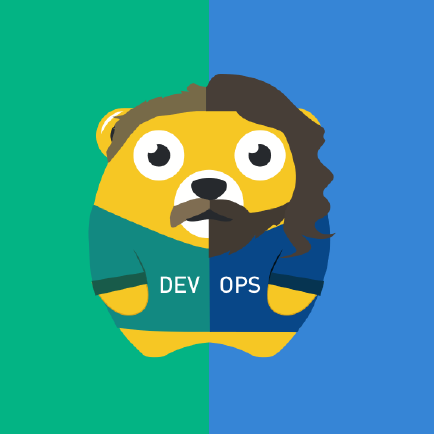How to Drain a Node in Kubernetes
Learn how to properly drain nodes in Kubernetes to prepare for maintainance.

In this Kubernetes tutorial, you will learn to drain a node using kubectl drain command to prepare for maintenance.
It is as simple as entering this command:
kubectl drain node_nameYou can get the nodes details using kubectl get nodes command.
But there is more to draining nodes in Kubernetes so let's take a detailed look at it.
Why do you need to drain nodes?
Kubernetes is designed to be fault tolerant of worker node failures.
There might be different reasons a worker node becomes unusable such as because of a hardware problem, a cloud provider problem, or if there are network issues between worker and master node, the Kubernetes master handles it effectively.
But that doesn’t mean it will always be the case. And this is when you need to drain the nodes and remove all the pods.
The draining is the process for safely evicting all the pods from a node. This way, the containers running on the pod terminate gracefully.
How to properly drain nodes in Kubernetes
Let's start with the practical demonstration.
Step 1: Mark the node as unschedulable (cordon)
To perform maintenance on a node, you should unschedule and then drain a node.
First have a look at the currently running nodes:
root@kmaster-rj:~# kubectl get nodes
NAME STATUS ROLES AGE VERSION
kmaster-rj Ready master 44d v1.18.8
kworker-rj1 Ready <none> 44d v1.18.8
kworker-rj2 Ready <none> 44d v1.18.8
root@kmaster-rj:~#
Look at the pods running on different nodes:
root@kmaster-rj:~# kubectl get pods -o wide
NAME READY STATUS RESTARTS AGE IP NODE NOMINATED NODE READINESS GATES
my-dep-557548758d-gprnr 1/1 Running 1 4d23h 172.16.213.48 kworker-rj1 <none> <none>
my-dep-557548758d-d2pmd 1/1 Running 1 4d15h 172.16.213.57 kworker-rj2 <none> <none>
pod-delete-demo 1/1 Running 1 2d 172.16.213.56 kworker-rj1 <none> <none>
root@kmaster-rj:~#
Now mark the node as unschedulable by running the following command:
root@kmaster-rj:~# kubectl cordon kworker-rj2
node/kworker-rj2 cordoned
root@kmaster-rj:~#
List the nodes again:
root@kmaster-rj:~# kubectl get nodes
NAME STATUS ROLES AGE VERSION
kmaster-rj Ready master 44d v1.18.8
kworker-rj1 Ready <none> 44d v1.18.8
kworker-rj2 Ready,SchedulingDisabled <none> 44d v1.18.8
root@kmaster-rj:~#
You can notice that the node kworker-rj2 is now labeled as SchedulingDisabled.
Till this step it doesn't evict the pods running on that node. Verify the pod status:
root@kmaster-rj:~# kubectl get pods -o wide
NAME READY STATUS RESTARTS AGE IP NODE NOMINATED NODE READINESS GATES
my-dep-557548758d-gprnr 1/1 Running 1 4d23h 172.16.213.48 kworker-rj1 <none> <none>
my-dep-557548758d-d2pmd 1/1 Running 1 4d15h 172.16.213.57 kworker-rj2 <none> <none>
pod-delete-demo 1/1 Running 1 2d 172.16.213.56 kworker-rj1 <none> <none>
root@kmaster-rj:~#
You can see that pod "my-dep-557548758d-d2pmd" still running on kworker-rj2 node.

Step 2: Drain the node to prepare for maintenance
Now drain the node in preparation for maintenance to remove pods that are running on the node by running the following command:
root@kmaster-rj:~# kubectl drain kworker-rj2 --grace-period=300 --ignore-daemonsets=true
node/kworker-rj2 already cordoned
WARNING: ignoring DaemonSet-managed Pods: kube-system/calico-node-fl8dl, kube-system/kube-proxy-95vdf
evicting pod default/my-dep-557548758d-d2pmd
pod/my-dep-557548758d-d2pmd evicted
node/kworker-rj2 evicted
root@kmaster-rj:~#
NOTE: kubectl drain cannot delete Pods not managed by ReplicationController, ReplicaSet, Job, DaemonSet or StatefulSet. You need to use --force to override that and by doing that the individual pods will be deleted permanently.
Now look at the pods:
root@kmaster-rj:~# kubectl get pods -o wide
NAME READY STATUS RESTARTS AGE IP NODE NOMINATED NODE READINESS GATES
my-dep-557548758d-gprnr 1/1 Running 1 4d23h 172.16.213.48 kworker-rj1 <none> <none>
my-dep-557548758d-dsanh 1/1 Running 0 27s 172.16.213.38 kworker-rj1 <none> <none>
pod-delete-demo 1/1 Running 1 2d 172.16.213.56 kworker-rj1 <none> <none>
root@kmaster-rj:~#
The pod which was running on kworker-rj2 node evicted from there and started as a new pod on kworker-rj1 node.
Nodes status remains the same:
root@kmaster-rj:~# kubectl get nodes
NAME STATUS ROLES AGE VERSION
kmaster-rj Ready master 44d v1.18.8
kworker-rj1 Ready <none> 44d v1.18.8
kworker-rj2 Ready,SchedulingDisabled <none> 44d v1.18.8
root@kmaster-rj:~#
Step 3: Uncordon the node after maintenance completes
You need to run following command afterwards to tell Kubernetes that it can resume scheduling new pods onto the node.
root@kmaster-rj:~# kubectl uncordon kworker-rj2
node/kworker-rj2 uncordoned
Verify the node status:
root@kmaster-rj:~# kubectl get nodes
NAME STATUS ROLES AGE VERSION
kmaster-rj Ready master 44d v1.18.8
kworker-rj1 Ready <none> 44d v1.18.8
kworker-rj2 Ready <none> 44d v1.18.8
Node kworker-rj2 becomes ready again to handle new workloads.
I hope you like this quick tip about draining nodes in Kubernetes.
Seasoned DevOps professional with 8+ years of real-world experience with tools like Docker, Kubernetes and more.
